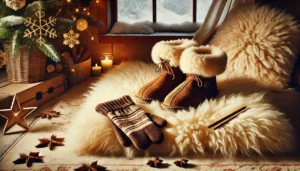18. The Best Slippers for Seniors: Why Sheepskin Outshines the Rest
The Best Slippers for Seniors Optimal Footwear Choices: The Best

Leather products have long been revered for their combination of elegance, durability, and timeless appeal. From ancient civilizations to modern-day fashionistas, leather has remained a staple material, symbolizing both luxury and practicality. But what makes leather products such a wise investment? This article delves into the multifaceted nature of leather, exploring its historical significance, the unique properties that make it resilient, and why, in an era of fast fashion and disposable goods, leather products stand out as a testament to quality and sustainability.
Leather products have been an integral part of human civilization for thousands of years. The earliest evidence of leather use dates back to prehistoric times when early humans utilized animal hides for clothing, shelter, and tools. The durability and availability of leather made it an indispensable resource in the development of societies. Over time, leather products evolved from mere functional items to symbols of status and prestige.
In ancient Egypt, leather was used not only for sandals and belts but also for elaborate ceremonial garments and military equipment. The Greeks and Romans refined leather tanning techniques, producing armor, footwear, and equestrian gear that were essential for their armies. Throughout history, leather has been associated with power, wealth, and craftsmanship, a reputation that persists in modern times.

Leather is distinguished by its remarkable combination of strength, flexibility, and aesthetic appeal. These characteristics are the result of both the natural properties of animal hides and the meticulous processes involved in leather production.
One of the primary reasons leather products are considered a sound investment is their exceptional durability. Unlike synthetic materials that may degrade over time, leather, when properly cared for, can last for decades. The natural fibers in leather are tightly interwoven, giving it high tensile strength. This strength allows leather to withstand wear and tear, making it ideal for items that endure frequent use, such as shoes, bags, and jackets.
Moreover, leather has the unique ability to develop a patina over time—a soft sheen that enhances its appearance as it ages. This aging process, rather than diminishing the value of leather products, often increases it, as the patina is a mark of authenticity and character. This attribute contrasts sharply with many modern materials that look worn out after just a few years of use.
Leather’s aesthetic appeal is another factor that contributes to its status as a luxury material. The natural grain of leather, with its unique patterns and textures, offers a sense of individuality that mass-produced materials cannot replicate. This distinctiveness is particularly valued in fashion, where consumers seek products that express their personal style.
Furthermore, leather’s versatility allows it to be used in a wide range of products, from high-end fashion accessories to furniture and automotive interiors. Whether dyed in rich colors or left in its natural state, leather exudes a sense of elegance that few materials can match. This versatility, coupled with its inherent beauty, makes leather products a preferred choice for those looking to make a lasting impression.
In an age where sustainability is becoming increasingly important, leather products offer an environmentally friendly alternative to synthetic materials. While leather production does involve the use of animal hides, it is important to note that these hides are often byproducts of the meat industry. By utilizing this byproduct, the leather industry reduces waste and makes full use of the resources available.
Moreover, leather products tend to have a longer lifespan than those made from synthetic materials, which often require replacement after a short period. This longevity means that fewer resources are consumed over time, reducing the overall environmental impact. Additionally, leather is biodegradable, unlike many synthetic alternatives that contribute to pollution and landfill waste.
In contemporary society, leather products continue to be synonymous with quality and sophistication. From fashion to interior design, leather remains a material of choice for those who value durability and style. However, the perception of leather products has evolved, with a growing emphasis on ethical production and sustainability.
Leather’s enduring popularity in fashion is evident in its widespread use in clothing, footwear, and accessories. Leather jackets, for example, have become iconic pieces in both men’s and women’s wardrobes, representing a blend of ruggedness and refinement. Similarly, leather bags and shoes are prized for their ability to complement any outfit while providing durability and comfort.
High-end fashion brands often use leather to craft luxury goods, further cementing its status as a premium material. The craftsmanship involved in producing leather products is another aspect that attracts consumers, as handmade leather goods are seen as a testament to the artisan’s skill and dedication. This connection to craftsmanship enhances the perceived value of leather products, making them desirable not just for their utility but also for their artistry.
Beyond fashion, leather is also a popular choice in interior design, particularly in the realm of furniture. Leather sofas, chairs, and ottomans are valued for their comfort, durability, and timeless appeal. The rich texture of leather adds warmth and sophistication to living spaces, making it a preferred material for those looking to create a luxurious atmosphere.
The durability of leather furniture is another key selling point. Unlike fabric-covered furniture that may show signs of wear after a few years, leather furniture can maintain its appearance for much longer. This longevity, coupled with leather’s ability to age gracefully, ensures that leather furniture remains a wise investment for homeowners.
Leather is also extensively used in the automotive and aviation industries, where it is prized for its durability, comfort, and luxurious feel. Leather seats and interiors are standard in high-end vehicles, providing a touch of elegance and sophistication that enhances the driving experience. In aviation, leather is used in both commercial and private aircraft, where its durability and ease of maintenance are particularly valued.
As society continues to evolve, so too does the leather industry. Advances in technology and a growing emphasis on sustainability are shaping the future of leather production and use. Ethical sourcing, environmentally friendly tanning processes, and innovations in leather alternatives are all contributing to the industry’s evolution.
With increasing awareness of animal welfare and environmental issues, the leather industry is under pressure to adopt more ethical practices. Many companies are now focusing on sourcing hides from suppliers that adhere to strict animal welfare standards. Additionally, the tanning process, traditionally associated with significant environmental impact, is being reformed. Modern tanning methods that use fewer chemicals and more sustainable practices are being developed, reducing the environmental footprint of leather production.
While genuine leather remains highly valued, there is growing interest in leather alternatives, often referred to as “vegan leather.” These alternatives, made from materials such as polyurethane, cork, and even mushrooms, aim to replicate the look and feel of leather without the use of animal products. While these alternatives have their own advantages, such as being more affordable and accessible, they often lack the durability and aesthetic appeal of genuine leather.
However, the development of high-quality leather alternatives is an area of active research and innovation. As these materials improve, they may offer a viable option for consumers who seek the elegance and durability of leather products but prefer not to use animal-derived materials.
In conclusion, leather products represent an investment in quality, durability, and timeless style. The unique properties of leather, combined with its rich history and cultural significance, make it a material that transcends trends and withstands the test of time. Whether in fashion, interior design, or automotive applications, leather products continue to be valued for their ability to combine practicality with luxury.
As the leather industry adapts to modern demands for sustainability and ethical production, consumers can feel confident that their investment in leather products is not only a choice for today but also for the future. In a world increasingly dominated by disposable goods, leather stands out as a material that offers enduring value—a testament to the enduring appeal of craftsmanship and quality.
Thus, for those seeking elegance, durability, and a touch of timeless sophistication, leather products remain an unmatched investment, destined to be cherished for years to come.
The Best Slippers for Seniors Optimal Footwear Choices: The Best

A quality sheepskin rug is more than just a decorative

In a world where climate conditions vary dramatically and sustainability